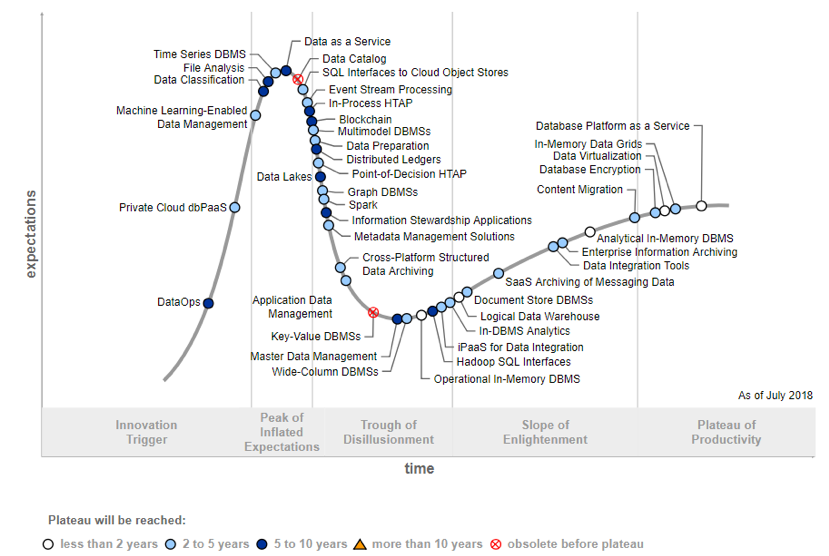Insight Paper August 3, 2021
Data as a Service
Transforming data into a business asset.
Introduction
Our Clients understand and accept the importance of data in today’s world, but can get lost on how to compile, mine, visualize, and act on that data. As an organization, do any of these questions resonate with you as well?
- How can we realize business value from data?
- How can we convert data into actionable insights?
- How can we establish the right data foundation?
Case Studies
Trexin works with Clients to help optimize their data journey. One of our Clients needed a new Data Warehouse (DW) for analytical purposes and chose an AWS cloud platform. Their source system was Oracle in addition to an in-house SQL DW, which overall had problems with limited analytics and reporting. Trexin partnered with the Client by developing and designing an end-to-end data architecture, then assisted with data migration and quality assurance (QA) activities. Our team built a Data Lake in AWS and performed an extract and load of data into the Enterprise Data Warehouse (EDW). Various AWS services were utilized along with SQL Server Integration Services (SSIS) on EC2 instance as an ETL tool, while the EDW was hosted on a MySQL Server. Trexin reduced the Client’s monthly snapshot reporting times from over 14 hours down to 1 hour. This decrease in reporting time was a major factor in reducing costs.
In another engagement, Trexin led a phase-by-phase assessment and built a dimensional data model for a customer-facing Business Intelligence (BI) and Analytics platform. The Trexin team was responsible for working with the Client to gather a current state inventory on tables and data points needed from the legacy system. This helped to determine an updated catalog of data for the new BI platform. After the initial assessment, Trexin built an extensible dimensional data model. By doing this, the Client will be able to provide their customers a seamless upgrade experience as they roll-out the new BI platform and will also have the flexibility to scale and extend the model as business needs change. This created a brand-new product for the Client to offer and a whole new revenue stream as well.
Guiding Principles
In the course of working with these Clients, Trexin has compiled the following useful principles to help guide any Data as a Service (DaaS) project.
Principle One
It is crucial to weigh the benefits and challenges of any major business decision.
BENEFITS TO DAAS AND THE CLOUD
- Revenue generator: Data can be used to produce insights for future improvements which in turn produces revenue, but the data itself can also be monetized. Data can be sold directly to customers or intermediates.
- Shorter setup period: Organizations can begin storing and processing data almost immediately using a DaaS solution.
- Enhanced performance: Cloud infrastructure is less likely to fail and less prone to downtimes or disruptions.
- Greater flexibility: More resources can be allocated to cloud workloads instantaneously.
- Cost savings: By migrating, organizations can allocate just the right amount of resources to the data workloads in the cloud and increase or decrease allocations as needs change over time.
CHALLENGES TO DAAS AND THE CLOUD
- Security considerations: Since DaaS often requires a migration of data to cloud infrastructure, it can uncover some security risks that would not occur if data stayed on local infrastructure. Encryption of data can diminish these risks.
- Unforeseen compliance measures: Some organizations may have sensitive data being moved to the cloud. This can uncover a few compliance challenges. This does not mean organizations with sensitive data cannot use the cloud, they simply must consider these compliance related issues upfront, and ensure proper procedures and requirements are put in place.
- Possibility of restricted capabilities: Using DaaS platform could potentially limit the tools available for working with data. For example, an organization may only be able to use tools their chose DaaS platform hosts /or is compatible with. Organizations must be sure to select DaaS platforms that offer the most flexibility in choosing tools to avoid such problems.
Principle Two:
In the end, every organization must choose their own path to optimize their data in a way that makes them a market leader.
Some common reasons a business might be unable to tap into their data effectively include low bandwidth, inadequate knowledge on where to collect and how to use the data, limited expertise within the organization to design around the data, and many other operational gaps. If a business is not built around the ability to process data, there is little room to leverage this data for positive business insights and outcomes.
Currently, DaaS services are being used both On Premises and in the cloud. The future of cloud technologies is growing rapidly due to its low cost and easy accessibility. DaaS in the cloud is attractive because it is a secure and inexpensive way to facilitate the availability of business-essential data through various channels.
Principle Three
DaaS is essentially taking complex data sets and turning them into tangible information for organizations to use as a business asset
We live in the Age of Machines and Internet of Things, where data and technology are key drivers of decision making and intelligence costs. DaaS is an exciting approach to harnessing the endless amounts of data flowing through companies today. According to a 2017 Gartner Hype Cycle, DaaS had about 5-10 more years until its peak. We are quickly closing in on this timeframe. We at Trexin believe that the COVID-19 pandemic accelerated this timeframe, and we are nearing the peak now. We would like to share the guidance we have given our Clients to position themselves as market leaders rather than market followers.

Conclusion
Properly utilizing data provides intelligence as a value add. Those who leverage data the best, win. At Trexin, we have the expertise and experience in optimizing our Clients’ data journey with acquisition, analysis, curation, storage, and use. We have a proven track record of being technology agnostic and are prepared to assist each Client with their individual needs no matter the technology in place. Our advisors can help with projects related to Information Security Management, Information Architecture, Data Integration, Information Quality Management, and much more.
References
“What Is Data-as-a-Service (DaaS)?” Talend, 13 Jan. 2021, www.talend.com/resources/what-is-data-as-a-service/
Ghosh, Bhaskar, and Karthik Narain. “What CEOs Need to Know About the Cloud in 2021.” Harvard Business Review, 10 Mar. 2021, hbr.org/2021/03/what-ceos-need-to-know-about-the-cloud-in-2021
“Data as a Service Market: Growth, Trends, and Forecast (2020-2025).” Mordor Intelligence, https://www.mordorintelligence.com/industry-reports/data-as-a-service-market
Rimol, Meghan. “6 Trends on the Gartner Hype Cycle for the Digital Workplace, 2020.” Smarter with Gartner, 4 Aug. 2020, https://www.gartner.com/smarterwithgartner/6-trends-on-the-gartner-hype-cycle-for-the-digital-workplace-2020/
Wilson, Victoria. “10 Cloud Computing Statistics You Need To Know.” SysGroup, 2018, https://www.sysgroup.com/resources/blog/10-cloud-computing-statistics-2018
Forrest, Conner. “Cloud Diversity: How 10 Companies Use The Cloud 10 Different Ways.” Tech Republic, 8 Nov. 2016, https://www.techrepublic.com/article/cloud-diversity-how-10-companies-use-the-cloud-10-different-ways/
Barlow, Buckley, and Greene Jonathan. “Data as a Service: The What, Why, How, Who and When.” Rocket Source, 2018, https://www.rocketsource.co/blog/data-as-a-service/

